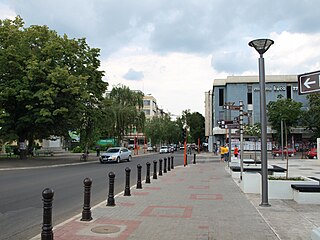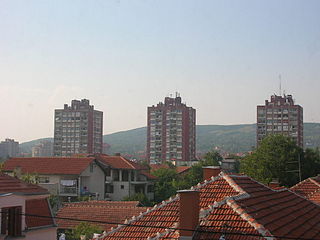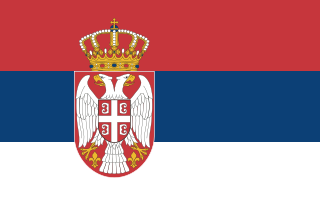
Ćuprija is a town and municipality located in the Pomoravlje District of central Serbia. The population of the town is 19,380, while the municipality has 30,645 inhabitants.

The Nišava District is one of nine administrative districts of Southern and Eastern Serbia. It expands to the south-eastern parts of Serbia. According to the 2011 census results, it has a population of 372,404 inhabitants. The administrative center of the district is the city of Niš.

Alibunar is a town and municipality located in the South Banat District of the autonomous province of Vojvodina, Serbia. Alibunar town and Alibunar municipality have a population of 2,883 and 19,780 respectively.

Kula is a town and municipality located in the West Bačka District of the autonomous province of Vojvodina, Serbia. The town has a population of 17,866, while the municipality has a population of 43,101.

Svrljig is a town and municipality located in the Nišava District of the southern Serbia. According to 2011 census, the town has a population of 7,553 inhabitants, while the municipality has 14,249.

Žitorađa is a village and municipality located in the Toplica District of the southern Serbia. The municipality includes 30 settlements. According to the 2011 census, the population of the municipality is 16,368 inhabitants.

Vlasotince is a town and municipality located in Jablanica District of southern Serbia. As of 2011, the municipality has 29,669 inhabitants, while the town itself has a population of 15,830 inhabitants.

Pantelej is one of five city municipalities which constitute the city of Niš. The municipality has a population of 79,290 inhabitants, according to the 2011 census results.

Aleksinac is a town and municipality located in the Nišava District of the southern Serbia. According to 2011 census, the town has a population of 17,978 inhabitants, while the municipality has 51,863 inhabitants.

Ražanj is a village and municipality located in the Nišava District of southern Serbia. The municipality is consisted of 23 settlements having a total population of 9,150 inhabitants. The municipality covers an area of 289 square kilometers and it is located 50 kilometers (31 mi) northwest of Niš.

Gadžin Han is a village and municipality located in the Nišava District of the southern Serbia. According to 2011 census, the municipality has 8,389 inhabitants.
Azbresnica is a village situated in Merošina municipality in Serbia.
Berbatovo is an inhabited settlement in Palilula in Nis region in Nisava district. It is located on the southern edge of Nis valley, at the foot of the mountain SELIČEVICA, 10 km from the center of Nis. In 1878 had 45 households and 375 residents, and 1930 132 households and 687 inhabitants. According to the census of 2002, there were 364 people.
Berčinac is an inhabited settlement in Serbia in the city of Nisavski. It is located in southeastern Europe, 12 km northwest from the city of Niš. According to the census of 2002, there were 129 people .>
Donji Komren is a suburb of Nis in Nisava district, in south-eastern Serbia. Administratively part of the city municipality of the Red Cross. It is located about 4 km north of the city center. According to the census of 2002, there were 5725 people.
Gornji Komren inhabited settlement in the city municipality of the Red Cross in the area of the city of Nis in Nisava district. Located at the foot of the hill Winnick, about 5 km from the center of Nis. According to the census of 2002, there were 946 people.
Lalinac is a village situated in the city municipality of Palilula in the Nisava district of the city Niš, Serbia. It is located on the alluvial terrace of South Morava and Nisava, about 10 km west of the center of Nis. According to the 2002 census, there were 1828 inhabitants. municipality in Serbia.

Beloinje is a village in Serbia, in the municipality of Svrljig in Nisava district. According to the census of 2002, there were 343 people.
Prosek is a village in the municipality of Niška Banja, within the city of Niš, Serbia. According to the 2002 census, the village had 600 inhabitants.














